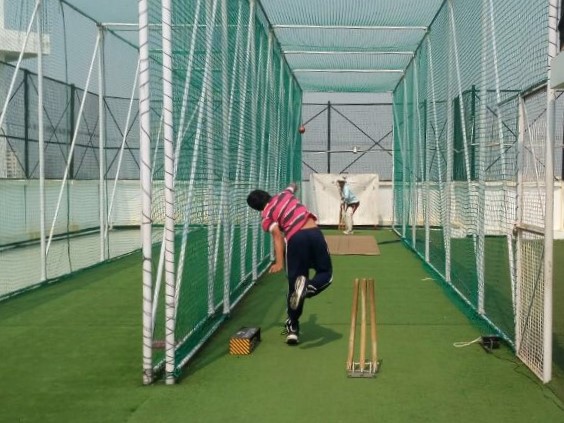|
 The devil is in the detail. The devil is in the detail.
It's an old saying that has a lot of modern truth when it comes to cricket. It has positives, but many consider the idea of "marginal gains" a waste of time and too much effort to put into a typical cricket team.
So, what's the truth?
It certainly worked in the world of cycling. Team Sky was formed from scratch to try and win the Tour de France in five years. Using the idea of "marginal gains" to the extreme, they did it in three.
Under Dave Brailsford, the team went crazy over details. They started with the big stuff (bikes, training, psychology) then drilled down further, even picking out the right pillows to use for cyclists to have the best night sleep.
No stone was unturned.
Naturally, without the budget of Team Sky, you wo't be able to recreate such attention to detail. But there are still small gains you can adopt to make just as dramatic results.
A marginal gain in cricket
Let's take a cricket example to prove my point.
In 2016 a club cricket team averaged 3.86 runs per over (RpO) the season of limited over cricket. They scored from 31% of the balls they faced (SB%).
This team scored singles from 18% of the balls they faced, 5% boundaries and 4% in twos and threes.
The team took, on average, 17 quick singles a match and faced 229 balls.
By the way, this is no paper exercise. This is a real team with real statistics.
Due to the large variation in SB% between games, it's easy to see what happened when things went well compared to when things went poorly. So, when the team made a good score,
- RpO rose to 4.37
- SB% rose to 33%
- Boundaries rose to 6%
- Singles rose to 19%
- Quick singles rose to 20
What does all this number crunching show?
That increasing small things by 1-2% makes big differences.
The team scored nearly 30 more runs per match by scoring from 5 more balls an innings.
Just 5 balls in 229!
The halo effect of these five balls was strong: more singles, more boundaries and more quick singles stolen.
Without this information, you might assume you have to make huge changes to your team or tactics to boost scores by 20%. In fact, a marginal gain of 1% in your strike rotation skills will certainly boost your final score.
Marginal gains for everyone
All this is great for team tactics and strategy, but what can you do as a cricketer or coach to gain the benefits of marginal improvements?
In other words, if you are a player on the team above, how do you go about boosting team SB%, quick singles or boundary%?
Shouldn't you just play rather then get a head full of numbers?
Yes, and no.
First, ask yourself about how much you train.
One of the easiest gains is to train more often. Simply by training more, you will improve. You never need to worry about the details of the team SB%, you can get to work sorting out your way of playing and you will naturally start scoring from more balls.
Over time, each small session builds on the next one and before you know it you have faced 10,000 balls and are feeling like a superstar.
Similarly, over time, every session you miss starts building the habit of not training.
You might overcome this habit with good form or talent (many do) but you are not giving yourself the best chance of success.
And, over time, each tiny, unnoticeable improvement you make at each practice can either build up by attending, or dip away by not turning up to nets.
So, build a training habit.
It might be as simple as managing your calendar to make sure you get there. Whatever it takes. Get to the sessions. Every tiny success is built on, every tiny failure chips away.
If you are nailing the numbers game, the next step is to start working on tiny improvements to what you do at nets: what's your focus on improvement (strike rotation)? How are you tracking your improvements? What's your mindset?
You can even get down to tiny details: What balls are you using? Is there a sightscreen at nets if you use one in games? Are you bowling no balls? Are you recreating conditions as closely as possible to games?
There's plenty of marginal gains for all of us.
Other marginal gains
But it doesn't begin and end at practice.
Years ago, a famous American coach, Vern Gambetta coined the phrase "24 hour athlete" to talk about marginal gains in another way.
Ask yourself:
- What can I do to be 1% faster and stronger than before?
- What can I do to improve my sleep quality by 1%
- How can I ensure my hydration is preventing dehydrated loss of performance?
- How can I increase the amount of time I am in form by 1% just by understanding my reaction to pressure?
- What small chance can I make to my diet to give me less body fat and more stamina?
- Will 20 minutes of meditation a week make more more focused when batting?
Each small thing might not seem like much. It isn't much to take a sip of a drink, for example. Yet, enough sips and you are properly hydrated. Proper hydration stops dehydration which can decrease performance significantly.
It's really about good habits.
Work out what habits will give you tiny gains (that become big gains over time). Build those habits and trust that, given time, they will work.
It's easy to either not start, or give up. It's easy to say "I don't think this will work" because you can't get the instant feedback. You may never know for sure that getting eight hours of sleep a night is better for you than six.
You just have to go with it.
Try building a few habits for six months. Start with the big win of training quantity and quality and look at other things like sleep, diet, mental training and exercise.
It's a simple approach, but not an easy one.
But with grit, hard work and faith you will build better habits, a better chance of success and cricketing marginal gains as successful as the cycling ones of Team Sky.
Discuss this article with other subscribers
|

.jpg)

.jpg)

.jpg)

.jpg)